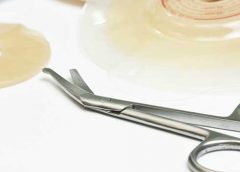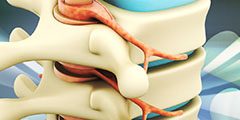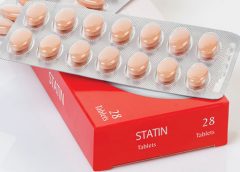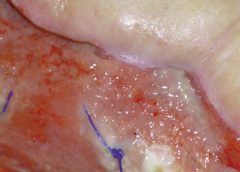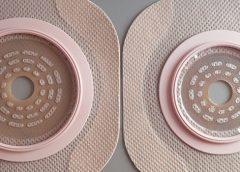The National Pressure Ulcer Advisory Panel (NPUAP) describes support surfaces as “specialized devices for pressure redistribution designed for management of tissue loads, microclimate, and/or other therapeutic functions.” These devices include specialized mattresses, mattress overlays, chair cushions, and pads used on transport stretchers, operating room (OR) tables, examination or procedure tables, and gurneys. Some support surfaces are part of an integrated bed system, which combines the bed frame and support surface into a single unit. (more…)
Read MoreCategory: Ostomy
Knowing when to ask for help
As a wound care expert, you’re probably consulted for every eruption, scrape, and opening in a patient’s skin. Occasionally during a patient assessment, you may scratch your head and ask yourself, “What is this? I’ve never seen anything like it.”
Most wound care experts want to help heal everyone, and most of us love a challenge. But when should we step back and consider referring the patient to another clinician? (more…)
Read MoreOstomy documentation tips
General characteristics
Document if the diversion is an intestinal or urinary ostomy, whether it’s temporary or permanent, and the location— abdominal quadrant, skin fold, umbilicus. (See Descriptor reference.) (more…)
Read MoreClinician Resources: Pressure-Injuries, Ostomy, Lymphedema, Delirium
Here is a round-up of resources that you may find helpful in your practice.
New illustrations for pressure-injury staging
The National Pressure Ulcer Advisory Panel (NPUAP) has released new illustrations of pressure injury stages. You can download the illustrations, which include normal Caucasian and non-Caucasian skin illustrations for reference.
There is no charge for the illustrations as long as they are being used for educational purposes, but donations to support the work of NPUAP are appreciated. (more…)
Read MoreClinical Notes: Healing SCI Patients, antiseptics on mahout, diabetes
Electrical stimulation and pressure ulcer healing in SCI patients
A systematic review of eight clinical trials of 517 patients with spinal cord injury (SCI) and at least one pressure ulcer indicates that electrical stimulation increases the healing rate of pressure ulcers. Wounds with electrodes overlaying the wound bed seem to have faster pressureulcer healing than wounds with electrodes placed on intact skin around the ulcer. (more…)
Read MoreOur gold medal issue: Best of the Best 2016
This issue marks the fourth anniversary of the “Best of the Best” issue of Wound Care Advisor, the official journal of the National Alliance of Wound Care and Ostomy. Fittingly, it comes during an Olympics year. Since 1904, the Olympics have awarded gold medals to athletes whose performance makes them the “best of the best.” This year, we’re proud to present our own “Best of the Best” in print format. (more…)
Read MorePracticing emotional intelligence may help reduce lateral violence
It’s been a stressful day at work—nothing new. One confused patient pulled off her ostomy bag, you’re having difficulties applying negative-pressure wound therapy on another, and a third patient’s family is
angry with you. We all experience stressful days, but unfortunately, sometimes we take our stress out on each other. Too often, this ineffective way of identifying and managing stress leads nurses to engage in lateral violence. (more…)
Read MoreDoing it cheaply vs. doing what’s best for patients
Sad but true: Much of what we do as healthcare professionals is based on reimbursement. For nearly all the services and products we use in wound care and ostomy management, Medicare, Medicaid, and insurance companies control reimbursement. For many years, these payers have been deciding which interventions, medications, products, and equipment are the best, and then reimbursing only for those items. If we want to use something not on the list, we—or our patients—will have to pay for it out of pocket. (more…)
Read MoreClinical Notes: biofilm, bariatric surgery, statins and more
Management of biofilm recommendations
The Journal of Wound Care has published “Recommendations for the management of biofilm: a consensus document,” developed through the Italian Nursing Wound Healing Society.
The panel that created the document identified 10 interventions strongly recommended for clinical practice; however, panel members noted that, “there is a paucity of reliable, well-conducted clinical trials which have produced clear evidence related to the effects of biofilm presence.” (more…)
Read MoreUnderstanding radiation dermatitis
According to the National Cancer Institute, an estimated 1.6 million new cases of cancer will have been diagnosed in the United States in 2015. During the course of their disease, most cancer patients receive radiation therapy.
Delivering high energy in the form of waves or particles, radiation therapy alters the DNA of cancer cells, causing their death. Radiation can be administered either externally or internally (through materials placed into the body). It’s given in fraction doses, with the total recommended dose divided into daily amounts. Treatment, including the total dose, is determined on an individual basis.
Although improvements have been made in delivery of radiation therapy, approximately 95% of patients who receive it experience a skin reaction. What’s more, radiation therapy commonly is given concurrently with chemotherapy or targeted therapy to improve survival, which increases the toxicity risk. (more…)
Read MoreCauses, prevention, and treatment of epibole
As full-thickness wounds heal, they begin to fill in from the bottom upward with granulation tissue. At the same time, wound edges contract and pull together, with movement of epithelial tissue toward the center of the wound (contraction). These epithelial cells, arising from either the wound margins or residual dermal epithelial appendages within the wound bed, begin to migrate in leapfrog or train fashion across the wound bed. Horizontal movement stops when cells meet (contact inhibition). The ideal wound edge is attached to and flush with the wound bed, moist and open with the epithelial rim thin, and pale pink to translucent. (more…)
Read MoreHow to manage peristomal skin problems
For an ostomy pouching system to adhere properly, the skin around the stoma must be dry and intact. Otherwise, peristomal skin problems and skin breakdown around the stoma may occur. In fact, these problems are the most common complications of surgical stomas. They can worsen the patient’s pain and discomfort, diminish quality of life, delay rehabilitation, increase use of ostomy supplies, and raise healthcare costs.
Peristomal skin problems also perpetuate a vicious cycle in ostomy patients: They impair adhesion of the pouching system, which in turn exacerbates the skin problem. That’s why maintaining peristomal skin integrity and addressing skin problems promptly are so crucial. (more…)
Read More


